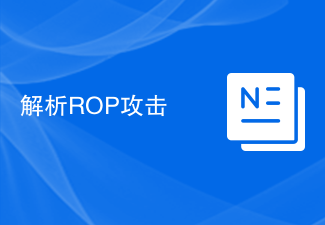As technology and data grow at an unprecedented rate, cloud computing has become the best choice for global enterprises to promote growth and innovation. As we rapidly move toward the second quarter of 2024, the Cloud Security Report’s forecasts highlight the challenges of cloud adoption in the cloud security space.

# As technology and data grow at an unprecedented rate, cloud computing has become the best choice for global enterprises to promote growth and innovation. As we rapidly move toward the second quarter of 2024, the Cloud Security Report’s forecasts highlight the challenges of cloud adoption in the cloud security space.
Challenge
Gartner Research predicts a paradigm shift in the adoption of public cloud infrastructure-as-a-service (IaaS) offerings. By 2025, 80% of enterprises are expected to adopt multiple public cloud IaaS solutions, including various Kubernetes (K8s) offerings. The growing reliance on cloud infrastructure raises critical security concerns, which the Cloud Security Alliance is painfully highlighting.
According to the Cloud Security Alliance (CSA), only 23% of organizations report having full visibility into their cloud environments. While cloud technology has great potential, a lack of visibility can leave organizations vulnerable to potential threats within their infrastructure. Another issue that further exacerbates cloud visibility issues is duplicate alerts. A staggering 63% of organizations face duplicate security alerts, hindering security teams’ ability to distinguish real threats from the noise.
Using a unified security approach can alleviate the above challenges, but we found that 61% of organizations are using 3 to 6 different tools. The situation has become more difficult to understand, underscoring the urgency of closing gaps in security defense mechanisms.
Clearly defined security defenses minimize manual intervention by security teams and facilitate the need for automated and streamlined processes in operations. Security teams spend the majority of their time on manual tasks related to security alerts, not only hindering the efficient use of resources but also reducing the productivity of teams working to resolve critical security vulnerabilities.
CSA statistics show that only 18% of organizations take more than four days to remediate a critical vulnerability, underscoring the urgency of the issue. This delay leaves the system vulnerable to potential disruption and compromise and highlights the urgent need for action. Additionally, the re-emergence of a vulnerability within a month of remediation highlights the need for proactive teamwork.
According to CSA, ineffective collaboration between security and development teams can inadvertently create defense gaps and increase the risk of exploitation. By facilitating communication between these critical teams, organizations can better strengthen their defenses and mitigate security threats.
Clearly, the cloud security landscape requires a more comprehensive approach to gain visibility into cloud environments. By implementing the best practices described below, organizations can get closer to their goal of building a secure and resilient cloud infrastructure.
Best Practices
This section will dive into the fundamental pillars of cloud security for protecting cloud assets, starting with the following:
Unified Security
One of the major challenges in cloud security adoption is the lack of a unified security framework. The Unified Security Framework consists of tools and processes that collect information from disparate systems and display it uniformly on a single screen.
Compared to traditional security tools, which require their own set of architectures to work and then additional add-ons to collect data, unified security solutions are a better way to get a holistic view of an organization's security posture.
The unified security framework integrates various security processes such as threat intelligence, access control and monitoring capabilities to simplify visibility and management while promoting collaboration between different teams such as IT, security and compliance.
Zero Trust Architecture (ZTA)
Zero Trust Architecture (ZTA) adopts a "never trust, always verify" approach. All stages of cloud data communication, regardless of their position in the cloud hierarchy, should be protected by verification mechanisms and adhere to a zero-trust solution.
An effective Zero Trust solution implemented through a cloud architecture should inspect all unencrypted and encrypted traffic before it reaches the required destination and pre-verify the identity of the access request to the requested data and the requested Content.
Adaptive custom access control policies should be implemented that not only change context based on the attack surface, but also eliminate the risk of any erroneous movements that compromise device functionality.
By adopting the Zero Trust practices described above, organizations can implement strong identity and access management (IAM) to provide granular protection for applications, data, networks, and infrastructure.
Encryption Everywhere
Data encryption is a major challenge for many organizations and can be mitigated by encrypting data at rest and in transit. Encryption-as-a-service solutions can be implemented that provide centralized encryption management for authorizing traffic across data clouds and hubs.
All application data can be encrypted through a centralized encryption process to ensure the security of sensitive information. Data will be governed by identity-based policies, ensuring cluster communications are authenticated and services are authenticated based on trusted authority.
Additionally, encrypting data at all layers of your cloud infrastructure, including applications, databases, and storage, can increase the overall consistency and automation of cloud security. Automated tools can streamline the encryption process while making it easier to apply encryption policies consistently across your entire infrastructure.
Continuous Security Compliance Monitoring
Continuous security compliance monitoring is another important pillar in strengthening the cloud security landscape. Organizations that specialize in healthcare (in compliance with HIPAA regulations) and payments (in compliance with PCI DSS guidelines) need to conduct a rigorous evaluation of infrastructure and processes to protect sensitive information.
To comply with these regulations, continuous compliance monitoring can be leveraged to automatically and continuously scan the cloud infrastructure for compliance gaps. The solution can analyze logs and configurations for security risks by leveraging the concept of “compliance as code”, where security considerations are embedded into every stage of the software development life cycle (SDLC).
By implementing these simplified automated compliance checks and incorporating them into every stage of development, organizations can comply with regulatory requirements while maintaining the agility of cloud software delivery.
Conclusion
In summary, achieving strong cloud security requires a unified security approach with a zero-trust architecture through continuous encryption and compliance monitoring. By adopting these best practices, organizations can strengthen their defenses against evolving cyber threats, protect sensitive data, and build trust with customers and stakeholders.
The above is the detailed content of Understand the cloud security landscape of 2024. For more information, please follow other related articles on the PHP Chinese website!
 mac钥匙串密码是忘了?Feb 15, 2024 pm 03:03 PM
mac钥匙串密码是忘了?Feb 15, 2024 pm 03:03 PM前言:今天本站来给各位分享关于mac钥匙串密码是忘了的相关内容,如果能正好解决你现在面临的问题,别忘了关注本站,现在开始吧!苹果电脑重置后的钥匙串密码是什么?钥匙串密码是用来加强电脑安全设置的一种强密码。对于那些设置了登录密码但仍觉得电脑不安全的用户来说,可以使用MacOSX内置的“钥匙串访问”(KeychainAccess)来为电脑设置一个更加安全的密码。这样,即使密码被破解或泄露,还能通过钥匙串密码来保护个人信息和敏感数据的安全。这一步可以有效提升电脑的整体安全性。你要使用钥匙串的时候需要密
 人工智能和机器学习在物联网中的作用有哪些Jan 30, 2024 pm 11:21 PM
人工智能和机器学习在物联网中的作用有哪些Jan 30, 2024 pm 11:21 PM将人工智能(AI)和机器学习(ML)融入物联网(IoT)系统中,标志着智能技术发展的重要进展。这种融合被称为AIoT(物联网人工智能),它不仅增强了系统的能力,还改变了物联网系统在环境中的运行、学习和适应方式。让我们一起探讨这种集成及其意义。人工智能和机器学习在物联网中的作用增强的数据处理和分析高级数据解释:物联网设备产生海量数据。人工智能和机器学习能够巧妙挑选这些数据,提取有价值的洞察,并识别出人类视角或传统数据处理方式无法察觉的模式。预测分析使用人工智能和机器学习可以根据历史数据预测未来趋势
 一文搞懂使用 Arthur Bench 进行 LLM 评估Feb 04, 2024 pm 05:33 PM
一文搞懂使用 Arthur Bench 进行 LLM 评估Feb 04, 2024 pm 05:33 PMHellofolks,我是Luga,今天我们来聊一下人工智能(AI)生态领域相关的技术-LLM评估。一、传统文本评估面临的挑战近年来,大型语言模型(LLM)的迅速发展和改进使得传统的文本评估方法在某些方面可能不再适用。在文本评估领域,我们已经听说过一些方法,如基于“单词出现”的评估方法,比如BLEU,以及基于“预训练的自然语言处理模型”的评估方法,如BERTScore。这些方法对于评估文本的质量和相似性提供了更准确的指标。LLM的快速发展为文本评估领域带来了新的挑战和机遇,我们需要不断探索和改进
 保护你的Linux系统数据,你需要了解 Seahorse!Feb 15, 2024 pm 02:30 PM
保护你的Linux系统数据,你需要了解 Seahorse!Feb 15, 2024 pm 02:30 PM作为一个Linux系统用户,你是否担心自己的敏感数据泄露或被盗用?在互联网时代,数据安全正在变得越来越重要。为此,一些Linux发行版包括Ubuntu和Debian都提供了Seahorse这一强大的工具来保护你的数据。那么,Seahorse是什么?它如何保护你的数据?本文将为你彻底揭秘。Seahorse:GNOME的密码及加密密钥管理器主要来说,Seahorse是一个预装在GNOME桌面的应用,并为其量身定做。然而,你可以在你选择的任何Linux发行版上使用它。它是一个简单而有效的工具,可以在本
 解析ROP攻击Feb 18, 2024 pm 12:46 PM
解析ROP攻击Feb 18, 2024 pm 12:46 PMROP攻击讲解随着信息技术的不断发展,网络安全问题逐渐引起了人们的关注。各种新型的网络攻击手段层出不穷,其中一种被广泛应用的攻击方式就是ROP(ReturnOrientedProgramming)攻击。本文将针对ROP攻击进行详细讲解。ROP攻击(ReturnOrientedProgrammingAttack)是一种利用程序中已存在的指令序列构造新
 金士顿U盘软件:高效管理和保护您的数据Feb 04, 2024 pm 07:30 PM
金士顿U盘软件:高效管理和保护您的数据Feb 04, 2024 pm 07:30 PM金士顿U盘软件:高效管理和保护您的数据在现代社会中,数据的管理和保护变得越来越重要。无论是个人用户还是企业组织,都需要一种高效的工具来管理和保护自己的数据。金士顿U盘软件就是这样一款专业而又实用的工具,它能够帮助用户轻松管理和保护自己的数据,让数据的管理变得更加简单和安全。举个例子,小明是一名销售人员,经常需要在不同的电脑上进行工作。他使用金士顿U盘软件可以将自己的工作文件和数据保存在U盘中,并通过软件进行加密和管理。这样,无论他在哪台电脑上工作,都可以方便地访问和编辑自己的数据,而不用担心数据
 保护您的数据安全:最佳U盘加密软件推荐Feb 11, 2024 pm 12:40 PM
保护您的数据安全:最佳U盘加密软件推荐Feb 11, 2024 pm 12:40 PM在数字化时代,数据安全成为了一个非常重要的问题。随着越来越多的人使用U盘来存储和传输数据,保护U盘中的数据安全变得尤为重要。本文将为大家推荐几款最佳的U盘加密软件,帮助您保护个人和机密数据的安全。工具原料:电脑品牌型号:DellXPS13操作系统版本:Windows10软件版本:Veracrypt1.24一、选择可靠的U盘加密软件1、首先,选择一个可靠的U盘加密软件非常重要。在市场上有很多不同的选择,但是我们推荐使用Veracrypt。Veracrypt是一款开源的加密软件,它提供了强大的加密算
 给文件夹加密的两种方法Feb 18, 2024 pm 12:54 PM
给文件夹加密的两种方法Feb 18, 2024 pm 12:54 PM有时候我们文件夹放了比较重要的资料,不想随意让别人看到,为了保护自己的私隐,往往需要给文件夹加密。下面分享两个保护文件夹的方法,小伙伴们可以根据需要选择适合自己的方法。方法一给文件夹加密的目的是为了不让别人看到文件夹里面的内容,所以我们不一定要设置密码,直接将文件夹隐藏起来也是可以的。首先,选中要隐藏的文件夹,点击鼠标右键,选择【属性】选项。在弹出的页面中,勾选【属性】中的【隐藏】选项,然后点击【确定】。完成上面操作后,文件就会隐藏起来,看不到了。如果发现隐藏的文件夹还能看到,但是颜色比较浅,则

Hot AI Tools

Undresser.AI Undress
AI-powered app for creating realistic nude photos

AI Clothes Remover
Online AI tool for removing clothes from photos.

Undress AI Tool
Undress images for free

Clothoff.io
AI clothes remover

AI Hentai Generator
Generate AI Hentai for free.

Hot Article

Hot Tools

SAP NetWeaver Server Adapter for Eclipse
Integrate Eclipse with SAP NetWeaver application server.

EditPlus Chinese cracked version
Small size, syntax highlighting, does not support code prompt function

Dreamweaver Mac version
Visual web development tools

Notepad++7.3.1
Easy-to-use and free code editor

VSCode Windows 64-bit Download
A free and powerful IDE editor launched by Microsoft






